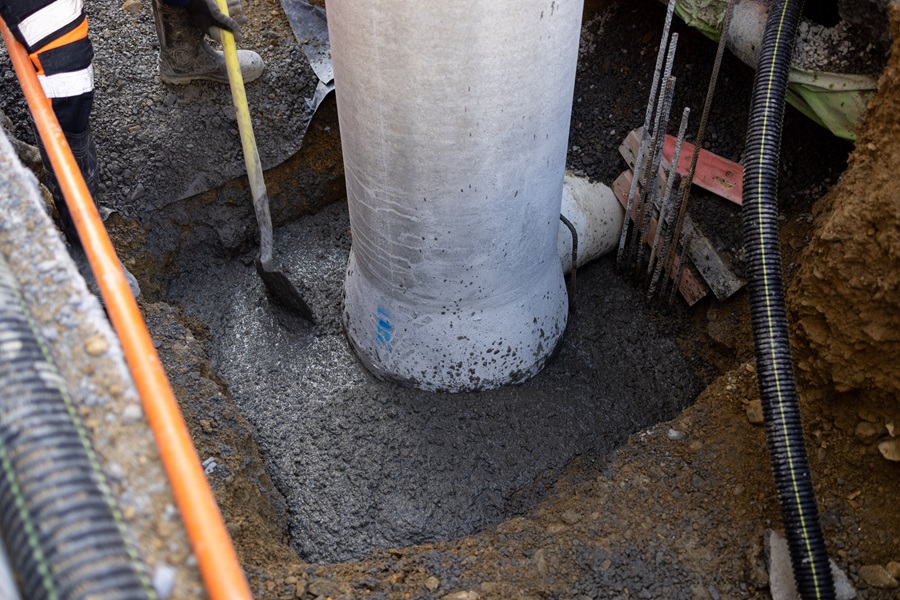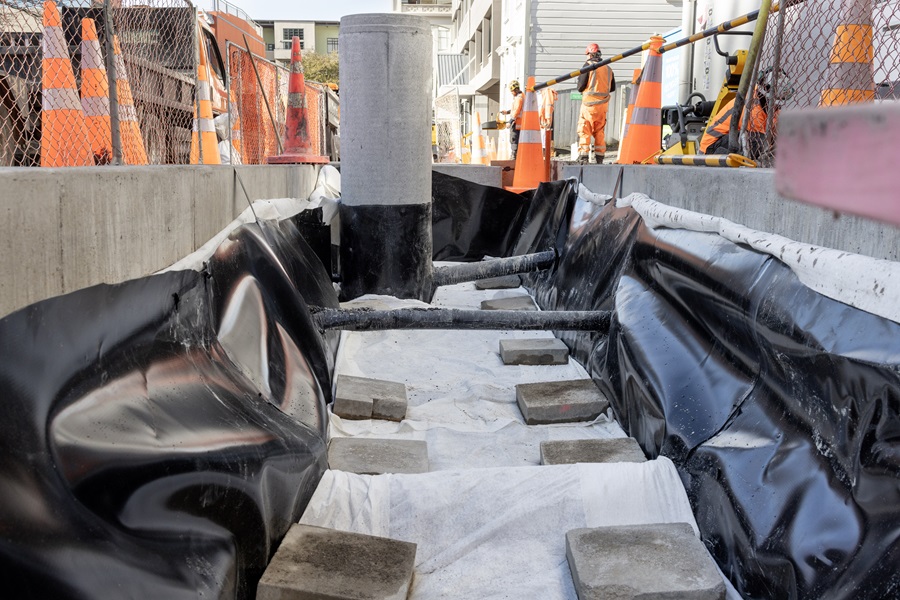Wellington has unveiled a fresh look and feel to the CBD’s Cuba Street along with a new pilot of rain gardens for the capital.
The Swan Lane and Garret Street upgrade is not only bringing a fresh look and feel to Cuba Street but introducing the first pair of rain gardens to Pōneke – a natural way of removing pollution from stormwater run-off before it enters our streams and reaches our harbour, said Wellington City Council Senior Urban Designer, Stephanie O’Shea.
“At first glance, a rain garden may look like a regular garden-bed, but it’s actually a complex system that requires technical planning to have a positive impact on our stream health (wai ora),” said Ms O’Shea.
“Stormwater run-off from the street is channelled into a rain garden, this water will have a bunch of pollutants in it because it’s been capturing the muck on the road from things like vehicles.
“As the water goes in, there’s a specific soil material layering within the garden, which absorbs pollutants as the water filters through it, cleansing it before it enters the stormwater system.”
As the official pilot for rain gardens in the capital, the gardens also hold cultural significance for the Waimapihi Stream that they flow into, and the life that exists within it, she said.
The name Waimapihi refers to the waters of Mapihi, a rangatira of Ngai Tara and Ngati Mamoe. It’s known that this Maori chieftainess used to bathe in the waters of the stream, further up the catchment. This stream has seen banded kōkopu, kōura and even Tuna living within its culverted walls today.

The Public Space Design Team worked in collaboration with Stu Farrent, a Water Sensitive Design Specialist from Morphum Environmental Ltd, to create the rain gardens.
“It’s not as simple as just planting a garden bed – it requires knowledge of the area, types of plants that work well for the conditions and the drainage system,” says Mr Farrent.
“Locally eco-sourced plant species support treatment through root growth to support a range of biological processes to take up nutrients, metals and hydrocarbons, which would otherwise flow to Waimapihi Stream and Te Whanganui-a-Tara. These solutions provide resilient water quality improvements whilst adding to the biodiversity of the inner city.”

“These rain gardens will demonstrate how we can work within the constraints of the inner city to still achieve environmental outcomes and therefore meet the aspirations of the community. The redevelopment of Swan Lane and Garret Street provides a timely opportunity to explore how we can better shape a future city which protects and enhances our urban water systems and the biodiversity they support.”
Mr Farrant said the gardens will contribute to improving the overall health of the many streams that exist beneath Pōneke, and support the flora and fauna that live within them.
“Take the time once the gardens are completed for a walk in the rain and see how the raingardens are doing their bit for the future of Wellington,” he said.
For more information on the Swan Lane and Garrett Street precinct project, visit wellington.govt.nz/swan-lane.



